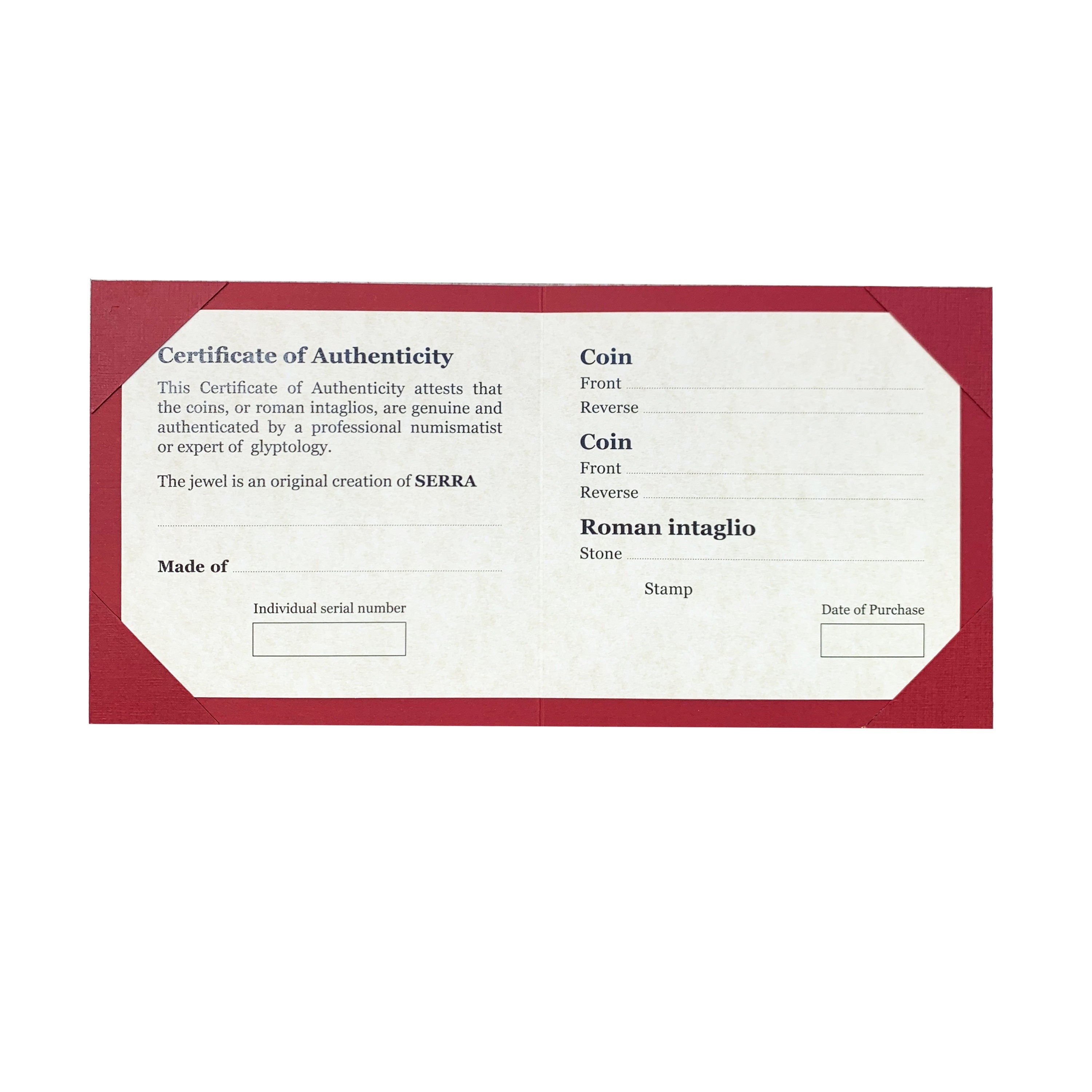EMPEROR DOMITIAN Genuine Ancient Roman Bronze Coin 1st cent. AD Silver Pendant
This sterling silver pendant proudly holds an authentic Roman bronze coin from the 1st century AD, featuring the likeness of Emperor Domitian. Adorning the reverse side of the coin is the inscription "SC," denoting Senatus Consulto (By Decree of the Senate).
Domitian, born on October 24, 51, ascended to the Roman imperial throne in 81, succeeding his father Vespasian and his brother Titus, thus becoming the final ruler of the Flavian dynasty. His reign, spanning from 81 to 96, was marked by authoritarian tendencies that brought him into sharp conflict with the Senate, leading to the diminishment of its powers.
Initially playing a minor and ceremonial role during his father and brother's reigns, Domitian's ascent to power occurred upon the declaration by the Praetorian Guard following Titus's death. His tenure of 15 years as emperor was the longest since Tiberius.
As emperor, Domitian implemented measures to bolster the economy, including the revaluation of Roman coinage, fortified the empire's border defenses, and embarked on an extensive reconstruction program aimed at revitalizing Rome. Noteworthy military campaigns were waged in Britain, where his general Agricola pursued conquests in Caledonia (Scotland), and in Dacia, although decisive victory against King Decebalus eluded Domitian.
His governance was characterized by strong authoritarian tendencies, marked by religious, military, and cultural propaganda fostering a cult of personality. By appointing himself perpetual censor, Domitian sought to exert control over public and private morality. Despite earning popularity among the populace and the military, his autocratic rule earned him the condemnation of many within the Roman Senate, who viewed him as a tyrant.
Our jewelry store, Serra Roma, proudly presents an exquisite collection that beautifully honors the ancient traditions of Greek and Roman civilizations. Each piece in our collection, including authentic ancient Roman and Greek coins and intaglios, is accompanied by a certificate of authenticity, providing proof of its historical significance and origin.









